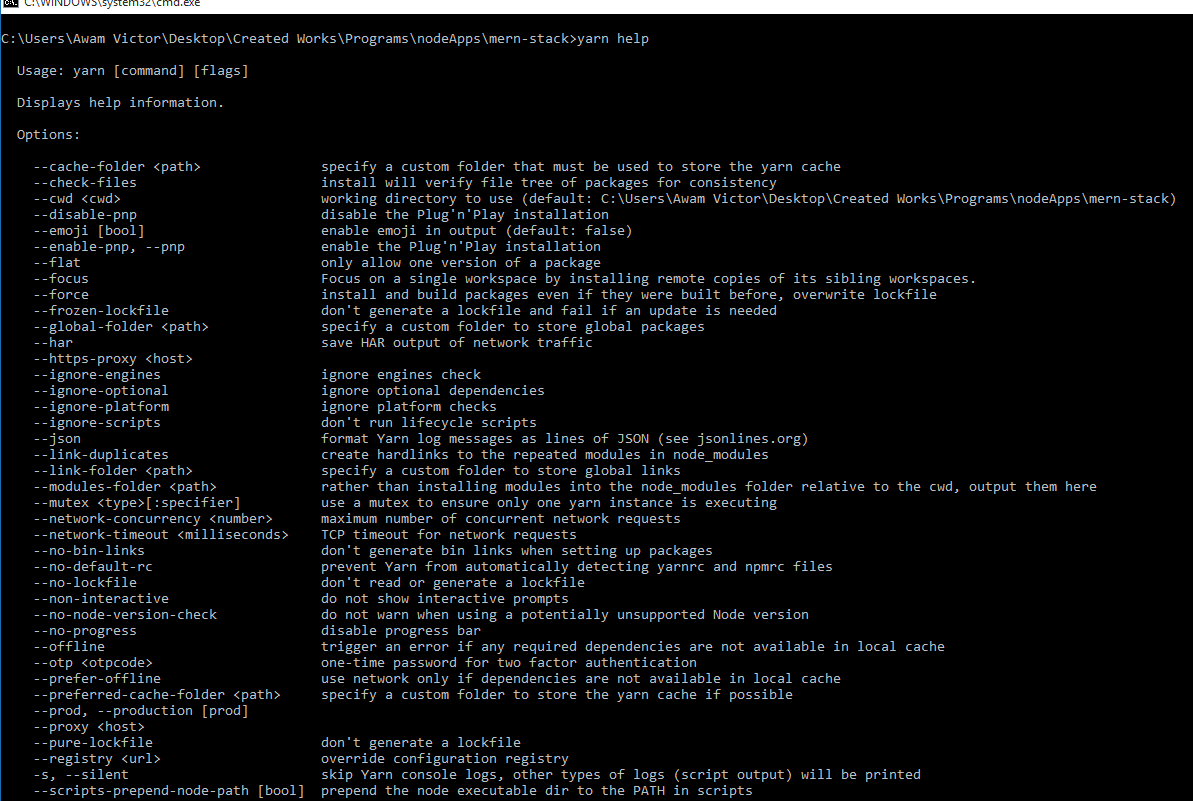Learn Yarn Help and Import commands for Smooth Migrations
yarn help
When you run the yarn help command, it will display all the available commands and flags, it is gives a brief explanation on what it does.

Yarn import
The yarn import command generates a yarn.lock from an npm package-lock.json file in the same location or from an existing npm-installed node_modules folder.
yarn import
when you run the command, it will assists the migration of projects that currently rely on package-lock.json, minimizing the differences that exists between the lockfile and the existing dependency tree as best as it can.
Motivation
Most projects currently use a package-lock.json file or check their node_modules folder into source control because they have fragile dependency trees. These projects cannot easily migrate to yarn; this is because yarn install could produce a wildly different logical dependency tree. There are trees that cannot be represented by yarn's yarn.lock, then some of the valid trees will be automatically deduped upon install. These nuances and others will present a significant barrier to manual migration.
yarn import will aim to alleviate the challenge by generating a yarn.lock file in one of two ways:
- Using the dependency tree in an existing package-lock.json file that is created by npm install
- If no such file exists, using the versions found inside node_modules according to normal require.resolve() resolution rules.
There are cases where the yarn resolution mechanism, cannot satisfy the dependency tree identically, in such cases alerts are made so that you can manually review the changes. The existing node_modules tree is checked for validity, and the resultant lockfile has to one that can be installed using yarn install without any surprises (failed compatibility, unresolvable dependencies, auto-dedupes, etc)
Previous:
Yarn create, dedupe, generate-lock-entry, and global CLI commands.
Next:
Mastering the Yarn Info command.
